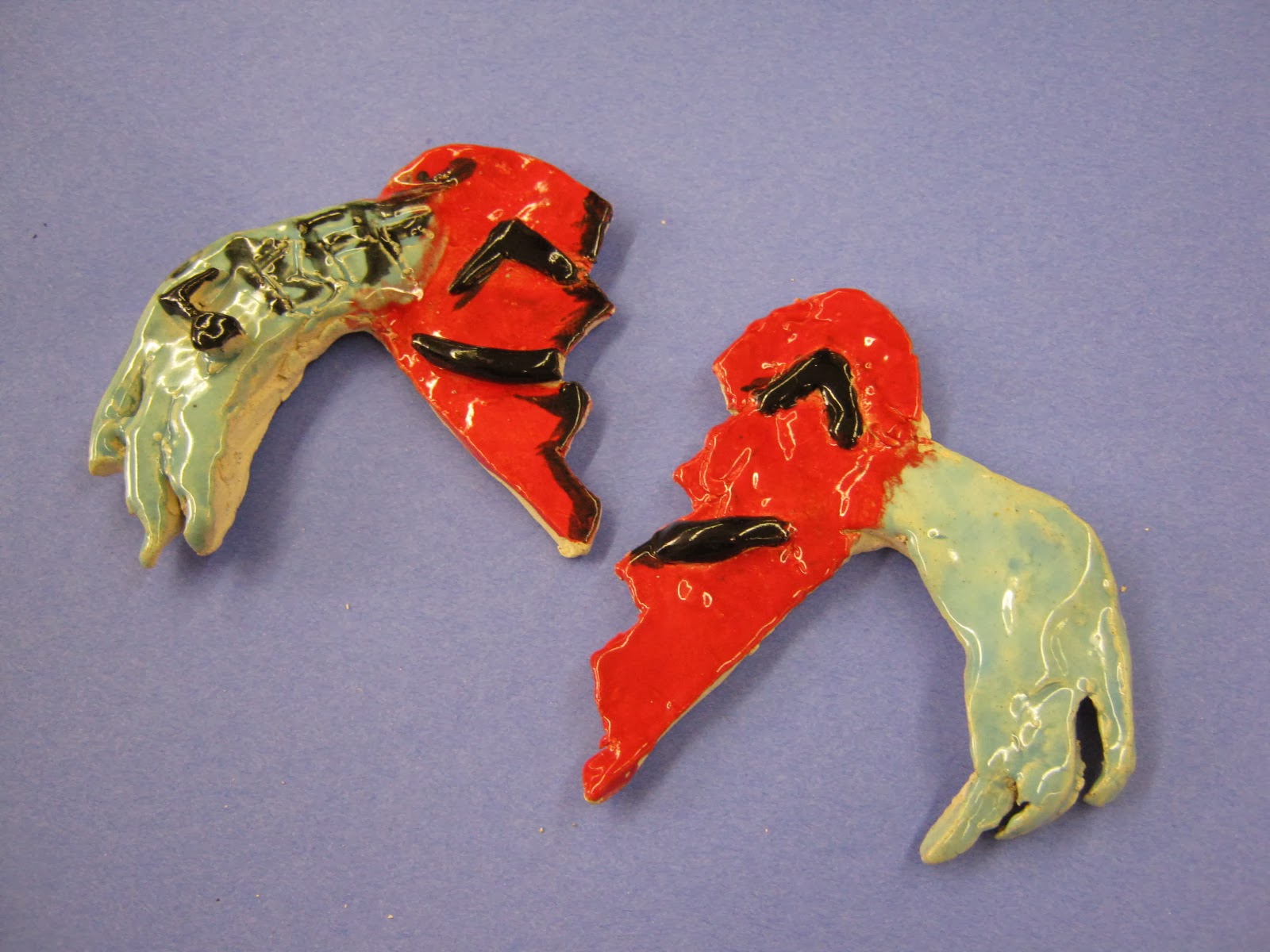My 6th grade curriculum parallel's our school's Social Studies curriculum. Since students learn about important events on world history, from Prehistoric to the Renaissance, I wanted to show how art has influenced and recorded history as well.
When the students begin studying Greece, they learn about Athens, Sparta, Greek Mythology, and architecture. I like to focus on the beginnings of theater. I share how theater was created as an offering to Dionysus, and how the auditorium was designed to help the audience view the performances and hear the actors.
Our main focus was on the masks that make the actors become the characters. The big question I ask my students is: "How did the Greek actors display the emotion of the characters within their masks?"
We discuss how electrical staging was not invented, so actors had to find ways to project their voices. We also discussed how hair and makeup effects were also not invented so masks were created to amplify their voices and display emotions of the characters.
Objectives
The students are to create a clay face depicting an emotion. Students are to show how to remove parts (using clay tools), and add-on pieces of the face (slip/score).
Beginning Ideas
I asked students to start with 8 different sketches of faces showing different emotions. They did not have to create a drawing that looked like "Greek Masks," which gave the students more choices. The emotions I listed were:
Happy
Sad
Angry
Surprised
Silly
Frustrated
Peaceful
Dreamy
(I also gave students the option to change one of the 8 suggested emotions for something else if they wished, like Depressed, Shocked, or Apathetic)
After students created their sketches, I had them choose one that would become their clay project.
Materials
-Ceramic Clay, or Air-Dry Clay
-Clay Tools
-Water
-Canvas Squares (to work with wet clay)
-If you have them, rolling pins and slab bars. If not, use the pals of your hands
-Storage bins or shelf to store projects
-Glazes (your choice)
-Tempura Paint for Air Dry Clay
-Ziploc bags for storage
The Project
I've done this project in both classroom (shared) and cart. I used ceramic clay in my home base school with a shared kiln (which took a few extra steps), and air-dry clay in my school without a kiln. The air-dry clay I used was Claystone, grey or terra cotta.
(40 minute classes, once a week with 10 minutes clean-up)
Day 1: Create sketches of faces, choose one for clay projects
Day 2: Begin creating the clay faces. Use rollers or palm of your hands to flatten out the clay. Instruct students to trace the shape of the face first before cutting it out. Store unfinished projects in closed ziploc bags
Day 3: Finish clay faces. Store open to allow drying.
(If ceramic, allow one week to dry out before placing in the kiln. Add in a project to start while students are waiting for their fired pieces.)
Day 4: Glazing/painting of faces.
Day 5: Completion of glaze/painting, written reflection/artist statement.
Here are some finished air-dry clay pieces from this year:
And here are some of the ceramic pieces too!



















No comments:
Post a Comment